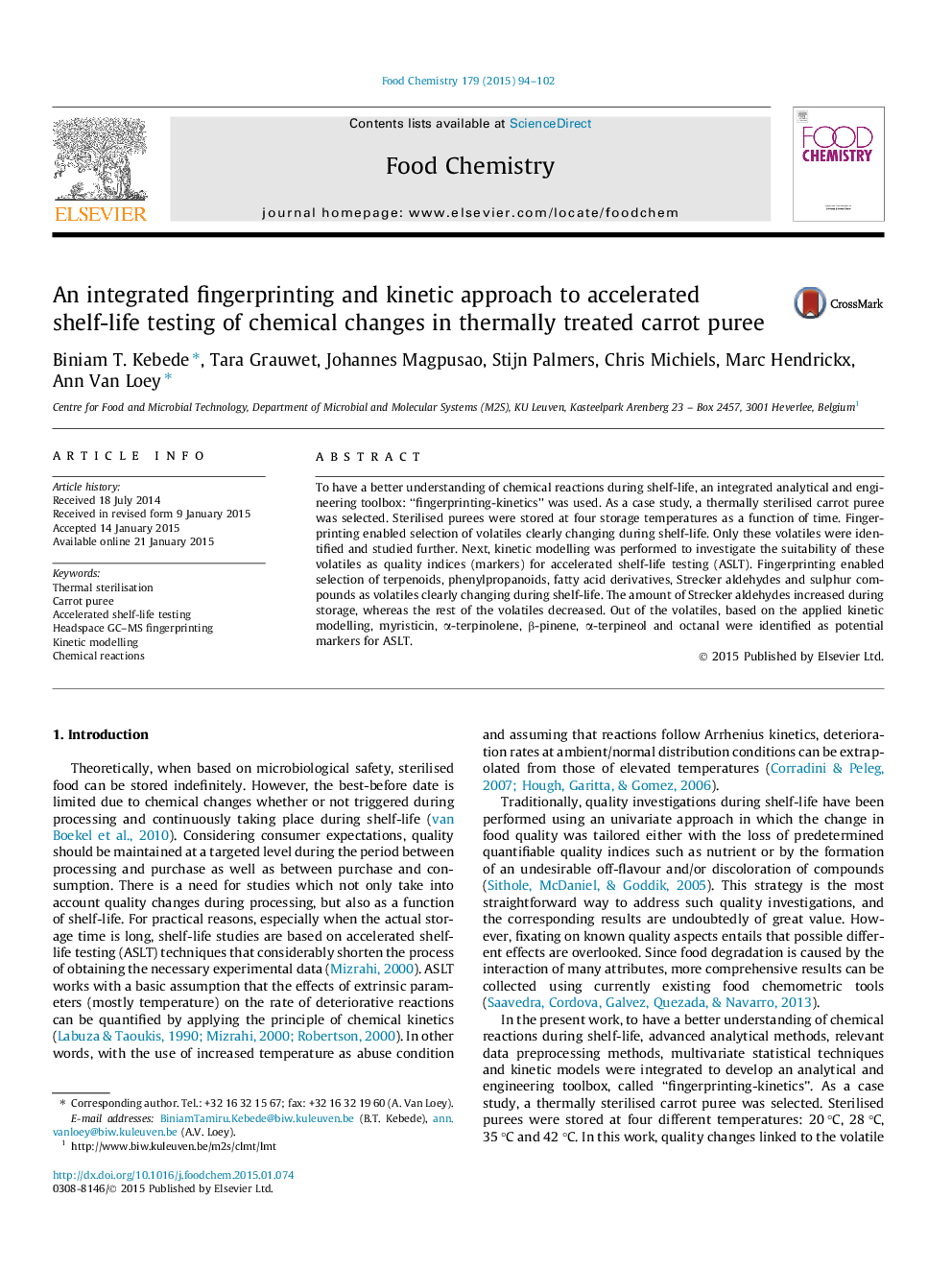| Article ID | Journal | Published Year | Pages | File Type |
|---|---|---|---|---|
| 7592219 | Food Chemistry | 2015 | 9 Pages |
Abstract
To have a better understanding of chemical reactions during shelf-life, an integrated analytical and engineering toolbox: “fingerprinting-kinetics” was used. As a case study, a thermally sterilised carrot puree was selected. Sterilised purees were stored at four storage temperatures as a function of time. Fingerprinting enabled selection of volatiles clearly changing during shelf-life. Only these volatiles were identified and studied further. Next, kinetic modelling was performed to investigate the suitability of these volatiles as quality indices (markers) for accelerated shelf-life testing (ASLT). Fingerprinting enabled selection of terpenoids, phenylpropanoids, fatty acid derivatives, Strecker aldehydes and sulphur compounds as volatiles clearly changing during shelf-life. The amount of Strecker aldehydes increased during storage, whereas the rest of the volatiles decreased. Out of the volatiles, based on the applied kinetic modelling, myristicin, α-terpinolene, β-pinene, α-terpineol and octanal were identified as potential markers for ASLT.
Related Topics
Physical Sciences and Engineering
Chemistry
Analytical Chemistry
Authors
Biniam T. Kebede, Tara Grauwet, Johannes Magpusao, Stijn Palmers, Chris Michiels, Marc Hendrickx, Ann Van Loey,
